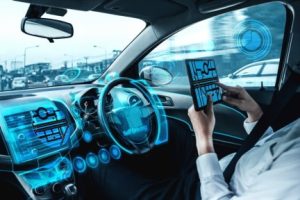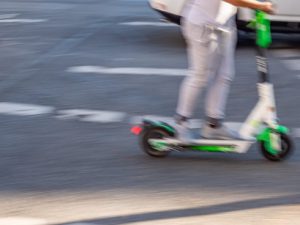Despite the fact many of the motoring public, and the general public, have never been consulted it seems as though driverless cars are on their way. They are actually being tested on the roads of the UK at this moment in time with governments and politicians pushing for their immediate introduction – in order to reduce the number of road traffic accidents and injuries. The situation regarding insurance for driverless cars and liability for compensation is becoming a little clearer but in many ways the more information made available the more questions this prompts!
Driverless Cars Advancement
While Tesla is the most high-profile company using the latest technology to introduce driverless vehicles to the roads, there are many other companies such as Uber involved in this sector. There have been accidents along the way, at least one death was related to the Tesla autopilot system, and no doubt more will follow. Supporters of these technologically advanced vehicles point to the fact they will reduce the number of accidents on the road, but it is the number of accidents involving driverless vehicles that seems to grab the attention of the media.
If we step back and look at driverless vehicles from a distance, they should significantly reduce human error on the road leading to fewer accidents, fewer injuries and fewer fatalities. However, in the event that you are injured by a driverless car who would you sue for compensation?
Testing Driverless Vehicles
At this moment in time tests involving driverless vehicles in the UK demand that qualified drivers sit in the driving seat, in the event that they need to take back control of the vehicle. Even during these test procedures, how do you prove who was in control of the vehicle at the time of a collision? Was it the automated vehicle technology? Was it the qualified driver?
This would probably be difficult to prove in a court of law were it not for the mass of technology fitted with driverless vehicles. This ensures there is a constant log of who is in control of the vehicle, speeds, braking distances and everything else you would need to know in the event of an accident. There is still much work to do in relation to the testing of driverless vehicles but progress has been made, the system does work and it is simply a case of perfecting the technology and making vehicles as safe as possible.
Claiming Compensation For Injury
The Association of Personal Injury Lawyers has been particularly vocal with regards to insurance liability in the event of an accident and injury to third parties. As it stands, common sense would suggest that if the vehicle was under the control of the driverless technology then the manufacturer would be liable to compensation for injuries caused. If the technology and the vehicle was able to prove manual control had been taken prior to the accident it would simply be a case of pursing a compensation claim against the driver’s insurance company. In a perfect world this would be an open and shut case, however, legal arguments, regulations and government guidelines have muddied the water!
Insurance Cover
As it stands section 145 of the Road Traffic Act 1988 places a legal liability on drivers to ensure they have motor insurance cover. At this moment in time this act does not cover driverless vehicles which is where the confusion starts to seep into the system.
Initially the UK government suggested a “bolt on” compulsory product liability insurance policy which would be paid for by the owner of a driverless vehicle. This seems a little bizarre, why would you expect the buyer of a product to take out product liability insurance which would only be required in the event that, in this case, the driverless car was found to be faulty? Surely the simplest method would be to amend the Road Traffic Act 1988 to introduce compulsory car insurance for driverless vehicles?
Product Liability Insurance
The problem with forcing those injured by driverless vehicles to claim compensation via product liability insurance is the simple fact that this is extremely expensive and prolonged. Not only is it very difficult to prove product-liability without substantial resources to investigate all elements of the vehicle, but the liability can simply be passed down the supply chain from manufacturer to component supplier.
As we know from injuries received in road traffic accidents involving “traditional vehicles” there can be cases of shared negligence and shared liability. When pursuing compensation claims against driverless vehicles we can only imagine how many parties might be involved in the production of components and assembly of the end vehicle. Each one may well need to be named in compensation action resulting in a legal minefield, massive legal costs and a prolonged court cases. Where a claimant has been badly injured, and requires long term medical treatment, there may be some hefty medical bills to fund. Who would cover these expenses while a complicated shared negligence/liability court case was ongoing?
Traditional Motor Insurance
The suggestion that traditional motor insurance companies would cover the cost of injury compensation involving a driverless vehicle might immediately set the alarm bells ringing. Any increase in the cost of traditional insurance cover would simply be passed onto the customer. However, if we wind back and look at the whole reason for bringing in driverless vehicles, surely there would be significantly fewer road traffic accidents and associated compensation claims?
The idea is that while traditional motor insurance companies would be the first port of call for compensation claims, for incidents involving driverless vehicles, part (or more likely all) of the increased cost would be covered by an overall reduction in road traffic accidents. There is also the opportunity for insurance companies to pursue car manufacturers for reimbursement of compensation because of faulty driverless vehicles. This would likely start the chain of events which we highlighted above, with the manufacturer pursuing component/technology providers. However, the end result would be very different because legitimate claims for compensation would be paid out in a timely manner while insurance companies and car manufacturers fight it out behind the scenes.
Conclusion
Some might suggest that the UK government is putting the cart before the horse by testing driverless vehicles before considering regulations and insurance cover in any real depth. In reality, there is a need to reduce the number of road traffic accidents, injuries and fatalities which occur each year. It is highly unlikely that driverless vehicles will be welcomed with open arms until the technology is proven and a trusting relationship built with motorists.
The situation is not helped by ambiguous statements about insurance and liability in the event of accidents. The simplest solution would be to make amendments to the Road Traffic Act 1988 to ensure that the owners/drivers (this is even a grey area) of driverless vehicles have a legal duty to have motor insurance in place. The idea of introducing product liability insurance would be extremely time-consuming, very expensive and delay compensation payments for those in need of financial assistance. Surely it is more sensible to make motor insurance companies the first port of call and they can then pursue driverless car manufacturers for reimbursement of compensation payments where vehicles were faulty. While it may take a while for insurance companies to be reimbursed it would not take too long for the car manufacturers, and even their component suppliers, to get their act together. There is nothing like a financial hit in the pocket to encourage companies to change their ways!



